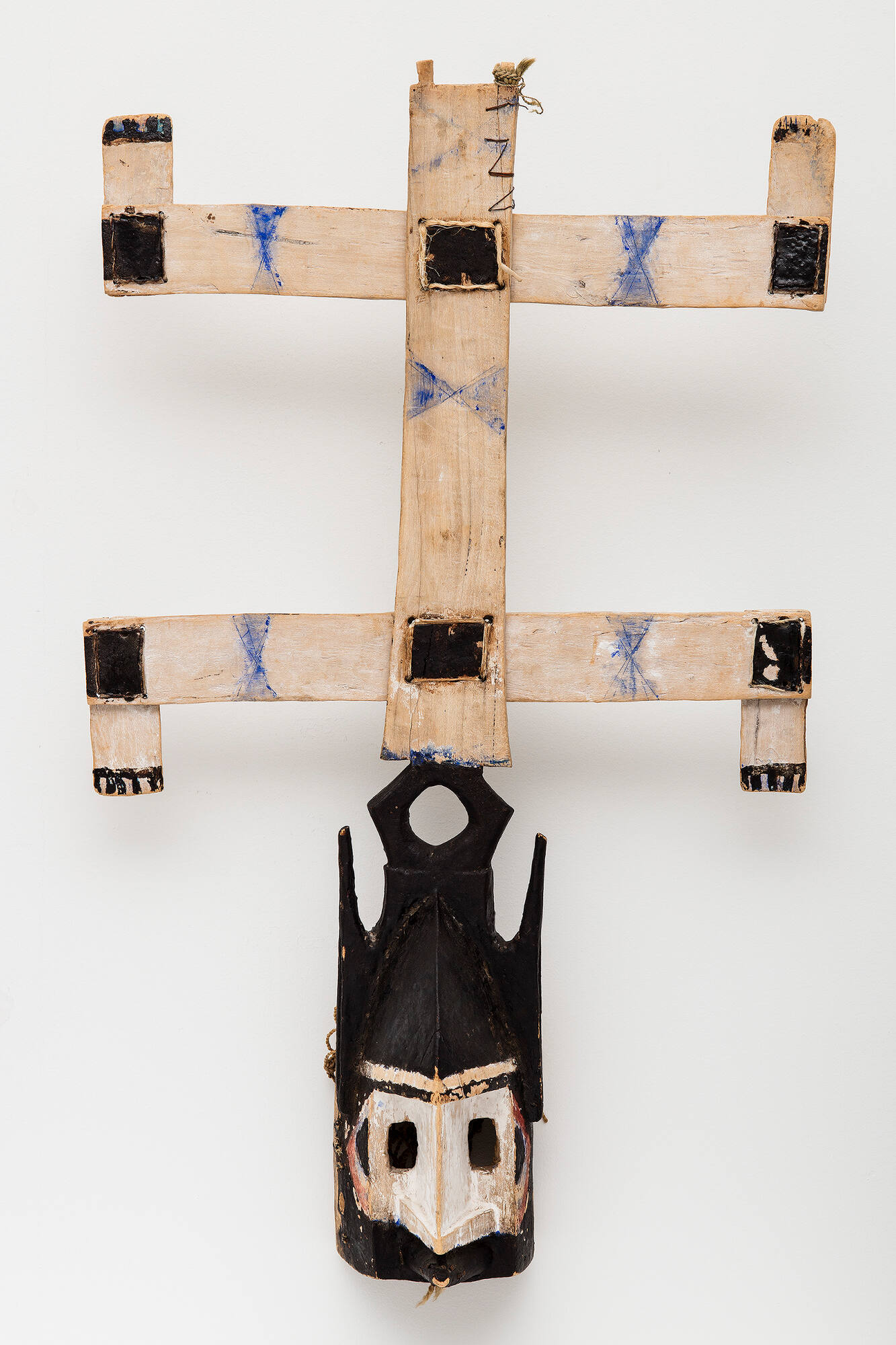
Object Details
Culture
Dogon (Mali)
Medium
Carved and painted wood
Dimensions
Height: 39 1/4 inches (99.7 cm)
Credit Line
Gift of Noyes Huston, Class of 1932, and Margaret Huston
Object
Number
74.022.003
BRIEF DESCRIPTIONKanaga masks are performed during the dama, the Dogon’s dry-season festival that (…)
BRIEF DESCRIPTIONKanaga masks are performed during the dama, the Dogon’s dry-season festival that both acknowledges death and celebrates life and fertility.WHERE WAS IT MADE?The Dogon people live in Mali, on the West coast of Africa.HOW WAS IT MADE?Dogon masks are made by blacksmiths, who work with both metal and wood. Using an adze, the blacksmith carves a mask from a single piece of wood. Dogon masks are carved from the wood of “male” trees, such as the togolo. The Dogon people believe that trees contain nature spirits. As a result, various rituals are performed before the tree is felled so that the spirit can be transferred to a new container. Sesame oil is then applied to the felled tree to keep the wood from drying out. Once the ritual exercises are complete the mask is carved. The basic form is fleshed out with an adze, and the finer details are delineated with a smaller knife. Lastly, the mask is painted with vegetal pigments. As exemplified in this mask, white paint is commonly used as a base color, with other colors reserved for detailing.HOW WAS IT USED?The kanaga mask is one of the most popular masks performed at the dama. The primary function of the dama festival is to assist the souls of the recently departed to the afterlife. In addition to the mask, the masquerader wears a vest decorated with cowrie shells, and a red raffia skirt over short, blousy trousers. This mask is missing its ruff of red and yellow fibers, as well as its plaited fiber backing which secures the mask to the dancer’s head. When performing, the kanaga dancers shuffle in a single-file line, waiting their turn to tip the mask back and swing it toward the ground in a circular motion. The best performers slightly touch the ground, causing a puff of dry soil to erupt, without breaking the mask.WHY DOES IT LOOK LIKE THIS?Speculation surrounds the kanaga mask form and the significance of the dance. Because knowledge of Dogon iconography is not intended for the uninitiated, researchers have arrived at different conclusions. What does the form of the mask make you think of? It may represent a bird with white wings; alternatively, the crossbars may reference God (arms and legs), or the meeting of the sky and earth. The kanaga mask may embody feminine characteristics: the white bird and white cowrie shells on the dancer’s vest suggest feminine beauty, the form has four “arms,” which is a feminine number in Dogon numerology, and the circular motion of the performance is considered to be a feminine form.To see other Dogon masks used in the dama festival, search for object numbers 82.114.005 and 82.114.010 in the keyword search box.












